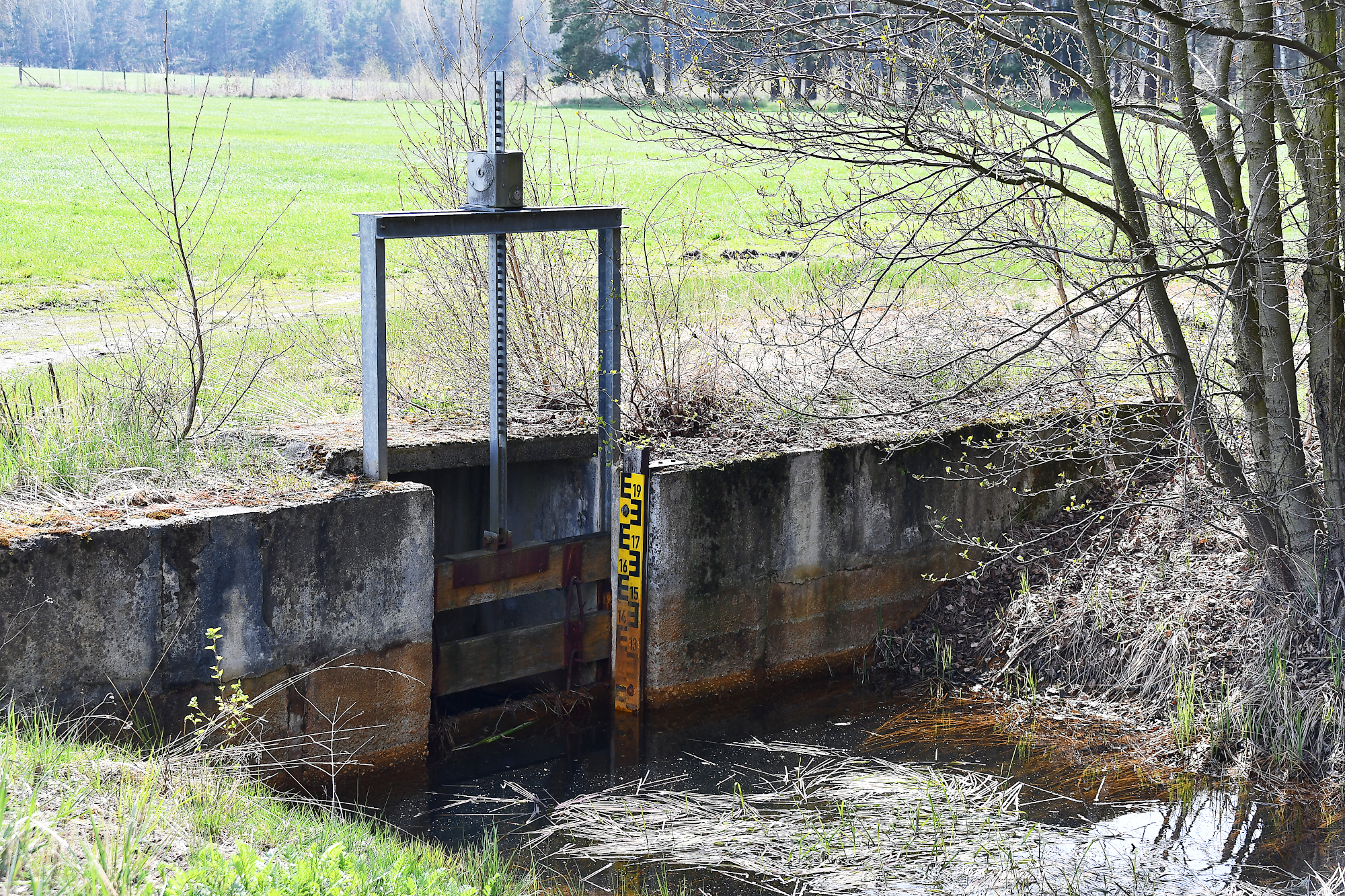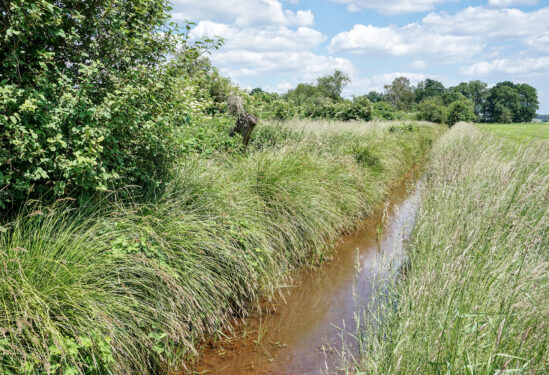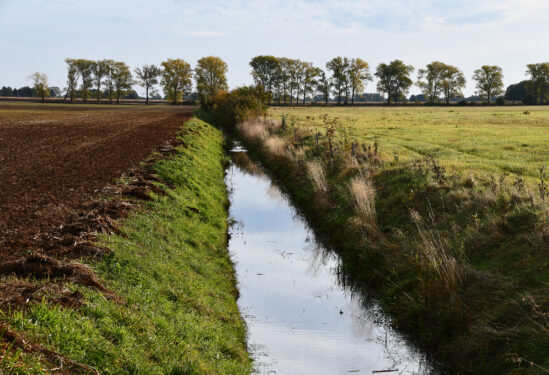The ongoing climate change manifests itself in many parts of Brandenburg, among other things, in the frequency and increasing extent of dry periods. Farms are confronted with severe harvest losses in years such as 2018. Local adaptation measures are therefore necessary.
In Lusatia, the water shortage is exacerbated by the consequences of land use history: not only lignite mining, but also the complex meliorations of the 1960s to 1990s ensured large-scale drainage of the landscape.
Precipitation, which increasingly falls in the winter months, continues to be rapidly drained into the receiving waters by the network of inland ditches constructed decades ago. Restoration of the dams that fell into disrepair after the political transition is a first step towards improved water retention. However, water and land management adapted to climate change must go beyond. In the Ditch Dams project, we are active in two areas of action:
– In managing crop impoundments, conflicts often exist between long-term water retention and short-term needs of land users. These include, for example, opening the dams in spring to allow land to be navigated, even though often the ditch cannot be adequately refilled afterwards. Solutions need to be worked out here to mitigate these conflicts.
– In addition, it is still unclear whether some ditches should be modified in profile, more chambered, or even closed altogether in light of changing climatic conditions. We hypothesize that some of the formerly wet and now drained areas will not permanently re-wet due to fallen groundwater levels, even if the ditches would have been closed. For these areas, it is necessary to determine whether partial or complete removal of inland ditches and drainage systems will provide benefits not only from a water retention perspective, but also from an agricultural point of view.
Agricultural crops in particular benefit from the retention of water in the landscape, as they are supplied with water for longer. Thus, yield security is improved.
Project implementation
In a first three-year project phase, essential basics are to be created together with the practice partners:
– Inventory to determine the status quo of the drainage system
– Selection and instrumentation of two intensive measuring sites to record the effects of ditch water levels on the adjacent agricultural crop areas
– Set-up and validation of a hydrologic model for the intensive monitoring sites to derive management recommendations, also under future climate conditions
– Analysis of past ditch management practices and conflicts in cooperation with practice partners to develop communication processes for the coordination of the dam levels and the operational control between the actors under the premise of the greatest possible water retention

Partner
Watercourse association Kleine Elster – Pulsnitz
Watercourse maintenance association Obere Dahme-Berste
Watercourse maintenance association Kremitz-Neugraben
Wenau Agrar GmbH, Schlieben
Agricultural cooperative Werenzhain eG
Project Funding
Ministry of Agriculture, Environment and Climate Protection of the State of Brandenburg



